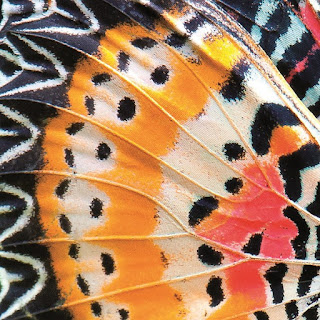Patterns In Nature
I'm the kind of writer who likes to continue ahead. Once I've secured a subject, I have no effective inclination to return to it in resulting books. However with Patterns in Nature I have come back to the subject of trademark illustration improvement for the third time.It began in 1999 with The Self-Made Tapestry, in which I cleared up the specialty of how case and ordinary structure rise all of a sudden in nature, through no foresight or diagram. Quite a while later I got myself on and on requested how to get hold from a copy of the now no more underway volume, so I proposed to Oxford University Press that we disperse a rethought discharge. That bloomed into a 2009 arrangement of three, a ton of which was totally new: Nature's Patterns: Shapes, Flow, Branches.
This is a science that, unwise of standard points of confinement between material science, science, science and geology, must be seen to be invited. We have in all likelihood authoritatively recognized the significant case of a tree's appendages, of a mackerel sky bound with fogs, of the sorted out whirlpools in turbulent water. Just by looking at these things, we are more than halfway to an answer.I am energized at long last to have the ability to show up here the certified abundance of nature's creative ability. It is not insignificant extraordinary quality to see critical solidarity in the repetition of subjects that these photos appear. Richard Feynman, a scientist not given to flights of unrestrained, imparted it impeccably: "Nature uses only the longest strings to weave her cases, so each and every piece of her fabric reveals the relationship of the entire woven work of art."
Exactly when water sits on a water-repellent surface, it may isolate into dabs. The conditions of these drops are spoken to by surface strain, which moves them into by and large round shapes, and likewise by gravity (which will level a dab on a level surface) and the qualities that exhibit between the water and the central surface. If those later qualities are adequately strong, the dabs are moved into lens-framed hotcakes.
Butterflies (and now and again even their caterpillar harbingers) make innovative usage of a little palette of illustration segments, for instance, eyespots, chevrons, stripes, and outlining of veins. These are sorted out to suit various reasons—for occasion, forewarning to s stop predators, spread, mimicry, and species affirmation. A wasp (Vespula vulgaris) wearing down its home. Why and in what manner would it be able to make the cells hexagonal? It has all the earmarks of being clear that various sorts of wasp have particular obtained faculties for their compositional layouts, which can vary by and large beginning with one creature gathers then onto the following. Surges of pigmentation. As mollusk shells create, pigmented material is here and there set down along the edge. If there are intermittent impacts of pigmented and unpigmented advancement, the result is banding inverse to the center point of the pipe molded shell. In case pigmentation happens at adjusted spots around the edge, the result is stripes parallel to this turn. Besides, the pigmentation happens as waves that progress steadily around the edge, it produces slanting stripes. These are much the same as the way invention wave plans structure.
As indicated by dreadful little creatures are full hexagonally, much the same as the ascents of an air pocket boatnspite of the way that, really, every component is a lens connected with a long, thin retinal cell underneath. The structures that are formed by clusters of natural cells routinely have outlines spoken to by much the same rules as froths and air pocket flatboatsfor example, just three cell dividers meet at any vertex
A wasp (Vespula vulgaris) wearing down its home. Why and in what capacity would it be able to make the cells hexagonal? It gives off an impression of being clear that various sorts of wasp have particular gained faculties for their auxiliary arrangements, which can change in a general sense beginning with one creature sorts then onto the following.





Post a Comment